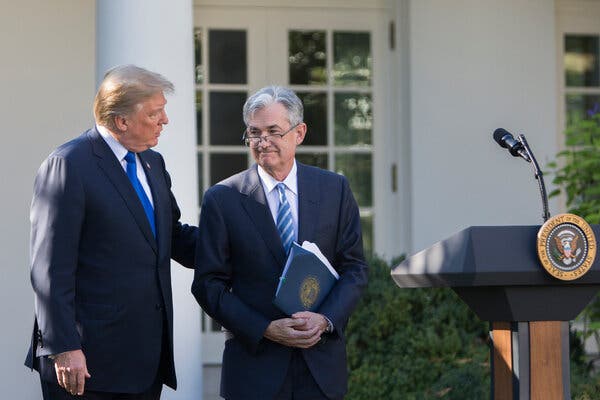The financial market experienced significant upheavals on a recent Wednesday, instigated by news of President Donald Trump’s consideration to dismiss Chairman Jerome Powell from the Federal Reserve. This information, emanating from an anonymous White House official, initially sent the S&P 500 into a sharp decline.
However, any rumblings of uncertainty within the marketplace eased somewhat after the President rebuffed claims of Powell’s imminent removal. Despite this, market participants maintained a cautious approach, not entirely dismissing the possibility of a major shake-up within the Federal Reserve in the near future.
The S&P 500 marginally increased its position by 0.32%, reaching a closing figure of 6,263.70. Similarly, the Nasdaq Composite Index also experienced growth, albeit a modest 0.26% – adjusting its total to 20,730.49. This bump marked the Nasdaq’s ninth record peak of the calendar year.
Echoing similar patterns of growth, the Dow Jones Industrial Average also benefited from the altering landscape, gaining an extra 231.49 points which translates to an increase of 0.53%. This gain ensured the index’s finale at 44,254.78. During times of extreme uncertainty, it notably slipped by 264.31 points or an equivalent of 0.6%.
A senior government official hinted to Republican members that President Trump is likely to dismiss Powell from his role as Fed chair in the immediate future. Backing this conjecture, The New York Times reported the initiation of a dismissal letter that was shared with Congress members.
President Trump labeled these reports as largely unfounded, going as far as saying it is ‘highly unlikely’ he plans to replace Powell anytime soon. However, keeping options open, Trump clarified that a change is not completely off the table, demonstrating a non-committal stance towards Powell’s future at the Federal Reserve.
Numerous times in recent weeks, Trump vocalized his displeasure towards the current Fed’s policy, advocating for substantially reduced interest rates. These calls amplified on a recent Tuesday, with Trump expressing a belief in the need for a 3 percentage points cut in the rates.
In contrast, Powell indicated that the Fed’s decision to maintain the monetary policy as is principally hinged around policies enacted by the Trump administration, notably the tariffs. Powell confirmed the tariffs’ size effectively encouraged the Fed to adopt the current monetary policy.
Explaining further, Powell said, ‘When we witnessed the enormity of the tariffs, we chose to put policy modifications on hold given the expected inflation escalation it was set to cause in the United States.’ He cautioned that any decision to dismiss him would not be well-received by the financial market.
The marketplace’s reaction to such a move would likely be negative, given Powell’s performance to date has earned the nod of approval from major market stakeholders. His removal would not only spark political controversy but could also destabilize financial market operations.
Apart from the looming Fed chair concerns, new data unveiled this week resurrected the lingering anxieties around continuous inflation and the consequent repercussions of Trump’s imposed tariffs on the American economy.
The recent release of the consumer price index demonstrated an increase in June from numbers reported in May. Even though the wholesale prices report showcased no obvious monthly variations, an in-depth examination brings forth more alarming insights.
Marc Balcer, Girard’s Director of Investment Strategy, expressed concerns about the underlying implications of the wholesale price data. He emphasized that the report does not factor in the direct burden of tariffs totaling $27 billion collected in June.
Balcer further explained, ‘It’s important to note that these tariffs will either have to be shouldered by foreign manufacturers, domestic co-operations, or eventually, the consumer.’ These facts underline the complexity of the current economic situation, contributing to the uncertainties clouding the financial market.

